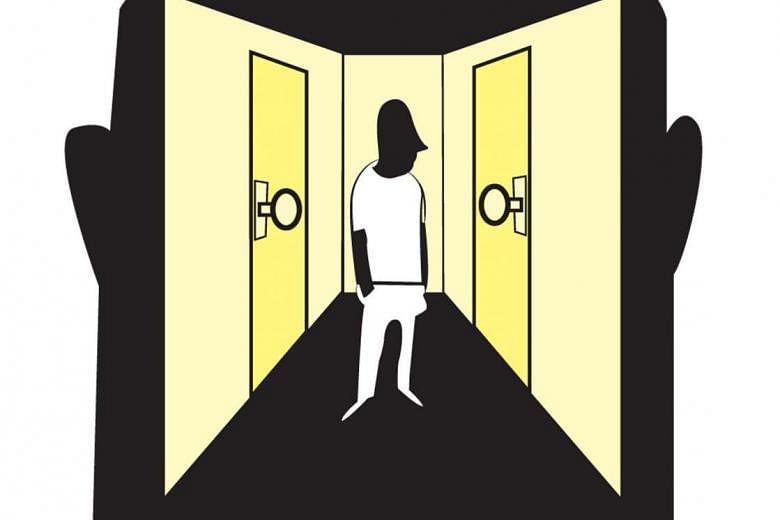Human beings are complex creatures; most of us do not have monolithic feelings, but have mixed feelings and thoughts about someone or something. We can see both positive and negative traits in a person or action, in our personal lives and at work. When it comes to our reactions to public events, a public leader or a public policy, our feelings and responses often form an ambivalent cauldron.
Consider some examples: We both like and dislike certain traits of our spouse, business partner or friend. When we make a decision on our work or lifestyle (say, start work earlier so you can go home earlier), we are likely to have both positive and negative feelings about it.
The conflict between the positive and negative is also salient when we experience moral dilemmas, such as whether to report wrongdoing or flag suspicious actions by someone close to us.
Then there are those times when a leader we respect says something we disagree with, or a political party we support advocates a position that is against what we believe ought to be.
It is common for people to have mixed feelings and thoughts in their reactions to policy debates and public discourse, such as over immigration, changes to the Elected Presidency and perceptions of relations between Singapore and China.
The experience of mixed feelings and thoughts, or what psychologists call "ambivalence", is a state of internal conflict.

We are unable, or find it very difficult, to choose between two opposing actions, to arrive at a decision, to decide to approach or avoid someone, or to speak up for or against a person or position.
If we understand the conflicts in the psychological state of ambivalence, we will be more likely to resolve our own ambivalence as well as respond to others' ambivalence more effectively.
Conflicts in ambivalence
People, decisions and actions have both positive and negative features. When we feel ambivalent, we recognise the pros and the cons.
But being in ambivalence is psychologically discomforting - you have strong feelings and thoughts that are opposing. You can see the two contrasting sides, and you are unsure what to feel, think or do about it.
Rather than sitting on the fence, it is more like being in the middle of a "tug-of-war". It is not feeling neutral towards two opposing positions. It is feeling "torn between". Ambivalence is a state of active conflict, and not passive indifference.
The quick way to get out of the discomforting state is to just take one position and reject the other. Thus, when people experience ambivalence, they are eager to take a position and reinforce it. This makes them susceptible to cognitive biases and emotion-based influences. They become more vulnerable to self-confirmation and persuasion by others. When the position taken is inconsistent with the facts, or inadequate to address the future, it becomes maladaptive.
To deal with ambivalence, we must understand its conflicting nature. There are three main types of conflicts.
MOTIVATIONAL CONFLICTS
Ambivalence occurs when two different motivations pull a decision in opposite directions. Should you seek out a sumptuous meal? For many, the enjoyment of eating and losing weight are often two opposing motivations relating to the decision.
Motivational conflicts also exist in social and economic situations. For example, someone may feel conflicted about what to spend time on when he is highly motivated to both pursue his career and help others in need.
Another example is what to do with our money when pulled by motivations to spend on ourselves versus donate to others, or spend on what we want now versus save for our future needs.
BELIEF CONFLICTS
We hold certain beliefs about specific individuals, and also specific groups. The beliefs that matter most are those related to integrity, competence and benevolence in intention.
Our beliefs about a person could be based on empirical evidence, our own encounters and experiences, opinions of others or salient stereotypes. Regardless of how they were formed, we want our various beliefs about the same person or group to be internally consistent.
We have a human need for coherence of thought, even though we are not always coherent in our arguments or consistent when taking positions.
We see positive traits as consistent with each other but not with negative traits, and conversely we see the same for negative traits. Which is why seeing a mix of positive and negative traits in the same person or group leads to a belief ambivalence.
Belief conflict also occurs when there is inconsistency between what a person or group practises and preaches. The effect is especially potent when the issue touches on core values such as integrity and impartiality, or fairness and meritocracy.
Belief conflicts are powerful cognitions that guide the way we think, feel and act towards others, and subsequently our trust in them.
EMOTIONAL CONFLICTS
Ambivalence is most felt when we experience strong emotions that are incompatible - love and anger towards someone we care about, or respect for and disappointment with the leaders we support.
Emotional conflicts can also involve uncertainty and social needs. For example, we may simultaneously experience hope for success and fear of failure, or the need to express our view and pressure to conform to a contrary view adopted by the group that we belong to.
The impact of emotional conflict is relevant in the current security situation related to terrorism. With more attacks undertaken not by militant outsiders but by radicalised citizens within industrialised societies, law enforcement agencies, including in Singapore, are urging family and community members to be on the lookout for people who might be radicalised by errant Islamic teachings and tempted to take up violent action.
This places family members and close friends of a radicalised individual in a difficult situation. They will experience strong emotional conflicts when they have to decide whether to report the person to security agencies. They are torn between feelings of loyalty to kinship or friendship and feelings of responsibility to society.
When people are in emotional ambivalence, their feelings dominate and override any rational thinking. That is why the security message needs to go beyond telling families and friends to be vigilant to detect signs of radicalisation in an individual.
We need to highlight the severity of the consequences involved if a lone radicalised individual launches an attack; help them anticipate the regret they will feel from not reporting, if that attack were to take place; and focus on the positive difference that they will make by reporting.
Resolving ambivalence
To resolve ambivalence, focus on what can drive the way we think, feel and act. I suggest we focus on goals, insights, values and expectations.
GOALS
When conflicted by competing emotions or opposing motivations, ask what the goals that we really want to achieve are. When goals are clarified, some of the positives and negatives in the mix may change in their relevance and impact. Also consider how goals are related to one another. If the goals are contradictory, we need to prioritise, coordinate, choose or make trade-offs. But if they are actually common or at least not mutually exclusive, we can connect them to converge or complement one another.
INSIGHTS
Learn and apply the insights on ambivalence. This involves understanding our motivations and regulating our emotions. Be more aware of our beliefs and biases, including the basis of a belief and evaluating its validity.
We can also gain new insights when we examine issues in context and find out facts objectively, instead of selecting information that confirms existing beliefs and preconceived positions. Consult those who are knowledgeable in the relevant area and can be trusted to tell the truth.
VALUES
Values represent our convictions of what is important and they remind us of what ought to be. They shape our attitudes, affect our thoughts, influence our emotions and guide our behaviours.
Values are critical when we are emotionally conflicted. Our emotions may contest our rationality. But our emotions are often influenced by our values, and they can change to align with our value system.
To reduce and resolve the various conflicts in ambivalence, put these core values at the centre of what we think, feel and act. This means cherishing character traits of integrity and impartiality, creating a fair and just society, cultivating communities to build a cohesive society, and caring for our country and fellow citizens.
EXPECTATIONS
Expectations are what we hope or desire to happen; and what we believe can and will likely happen. The positive effects of met expectations on physical and psychological well-being, as well as trust and relationship-building, are well-established. This is conversely true about the negative effects of unmet expectations.
To resolve ambivalence, evaluate if the positives and negatives are based on realistic expectations. If they are not, recalibrate so that expectations become more likely to be met than unmet. When expectations are realistic, they are also less likely to be extremely positive or negative. This in turn reduces the intensity of ambivalence.
Information also shapes expectations. When relevant information is not available, or when false information is accepted as true, people will understandably have a wrong or limited perspective and form unrealistic expectations about an issue.
We need to make the effort to search for relevant information and verify facts. On the part of those who hold the information, share more data to engender more realistic and well-informed expectations.
Mixed feelings and thoughts about people, decisions and actions are natural, and they occur often. We should not trivialise them, nor be overwhelmed by the sense of conflict between the positives and negatives. Instead, we can reflect on the conflicts and resolve them. Adopt the "GIVE" approach - clarify the goals, capitalise on the insights, centre on our values, and calibrate our expectations.
Ambivalence can be adaptive or maladaptive. Pause to understand the mixed feelings and thoughts. Prevent stirring the pot of negativity. Promote spreading the nuggets of positivity.
We can address ambivalence in ways that benefit self and others, personal and work lives, leadership and teamwork, policy formulation and implementation, and even community relations and social cohesion.
- David Chan is director of the Behavioural Sciences Institute and professor of psychology at the Singapore Management University.



